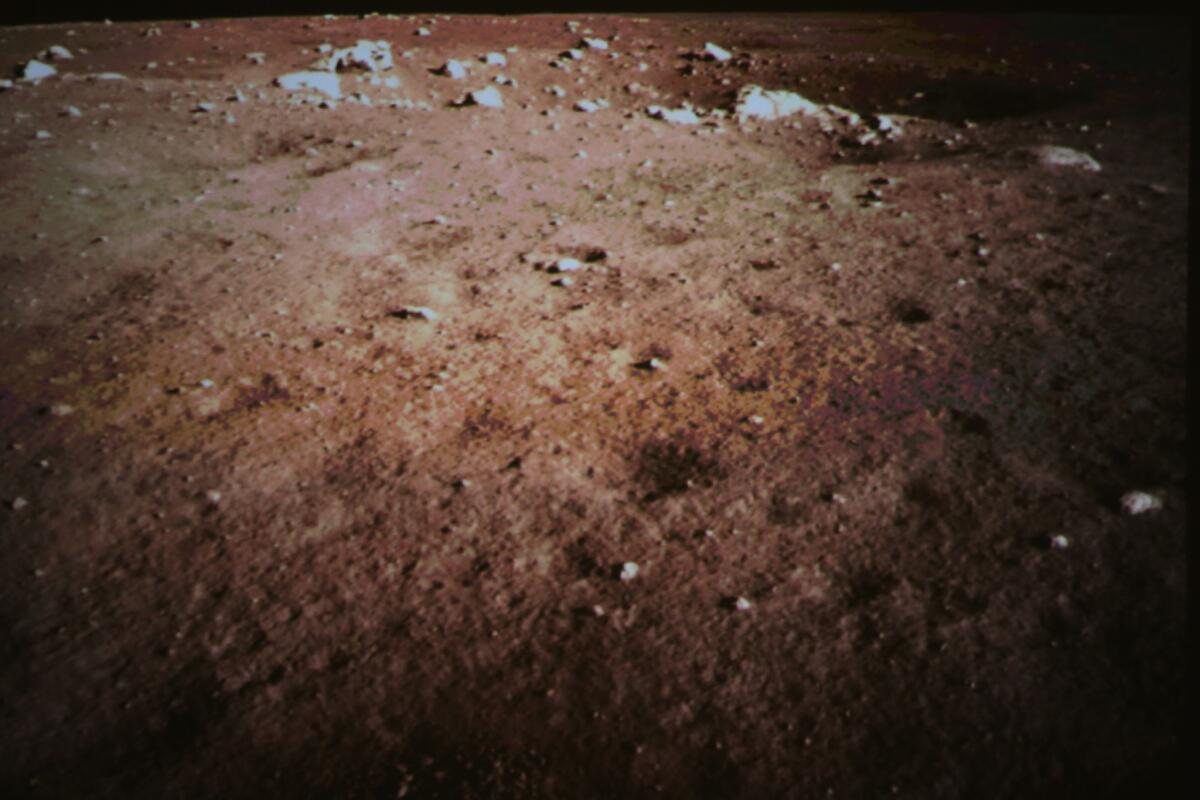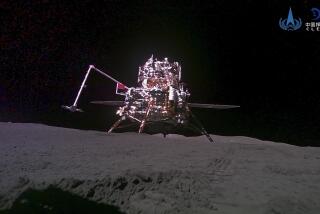China state media posts images from moon rover

- Share via
BEIJING – Chinese state media early Sunday began transmitting images and video taken by its moon rover, a gold-hued unmanned exploration vehicle named the Jade Rabbit after the story of a mythological Chinese moon goddess who kept a pet rabbit.
The images were sparking excitement among space enthusiasts.
“It is just beautiful to see the surface of the moon up close in a way we haven’t in years. The images we remember of the moon were taken decades ago. These are the first photographs of the Internet age,’’ said Morris Jones, an Australian space analyst based in Sydney.
Maximizing the publicity value of the landing, China is posting video and images on state websites.
After days in orbit around the moon, the lunar probe known as Chang’e-3 touched down on the surface at 9:11 p.m. Saturday, Beijing time, in the Bay of Rainbows, the Beijing Aerospace Control Center reported. The six-wheeled rover then separated from the landing vehicle. At 4:35 a.m. Sunday, the rover touched the moon’s surface, leaving tracks in the lunar soil.
The rover is expected to spend three months on the moon exploring its “geological structure and surface substances and looking for natural resources,’’ the official New China News Agency said.
It is the first time any country has accomplished a soft landing on the moon since the Soviet Union in 1976. The U.S. first landed a spacecraft on the moon in 1966. Since the space race between the United States and Soviet Union in the 1960s and 1970s, lunar research has been largely eclipsed by exploration of planets.
The Chinese government says its moon exploration is purely scientific.
“Compared to the last century’s space race between the United States and the former Soviet Union, mankind’s current return to the moon is more based on curiosity and exploration of the unknown universe,” deputy engineer Sun Huxian was quoted as telling the news agency Saturday. “China’s lunar program is an important component of mankind’s activities to explore peaceful use of space.’’
The Chinese have said they hope to land a man on the moon, perhaps in 10 to 15 years.
Among the experiments the rover will conduct are investigations of the the lunar topsoil. The rover is also supposed to plant a telescope on the surface.
But experts say the mission has as much to do with propaganda, burnishing China’s image as a new superpower; and making sure that the next man on the moon will be Chinese.
[For the record, 4:30 p.m., Dec. 15: An earlier version of this post said the U.S. first landed a spacecraft on the moon in 1969. The U.S. landed the Surveyor probe on the moon in 1966. 1969 was the year of the first manned moon landing.]
Twitter: @BarbaraDemick
More to Read
Sign up for Essential California
The most important California stories and recommendations in your inbox every morning.
You may occasionally receive promotional content from the Los Angeles Times.










